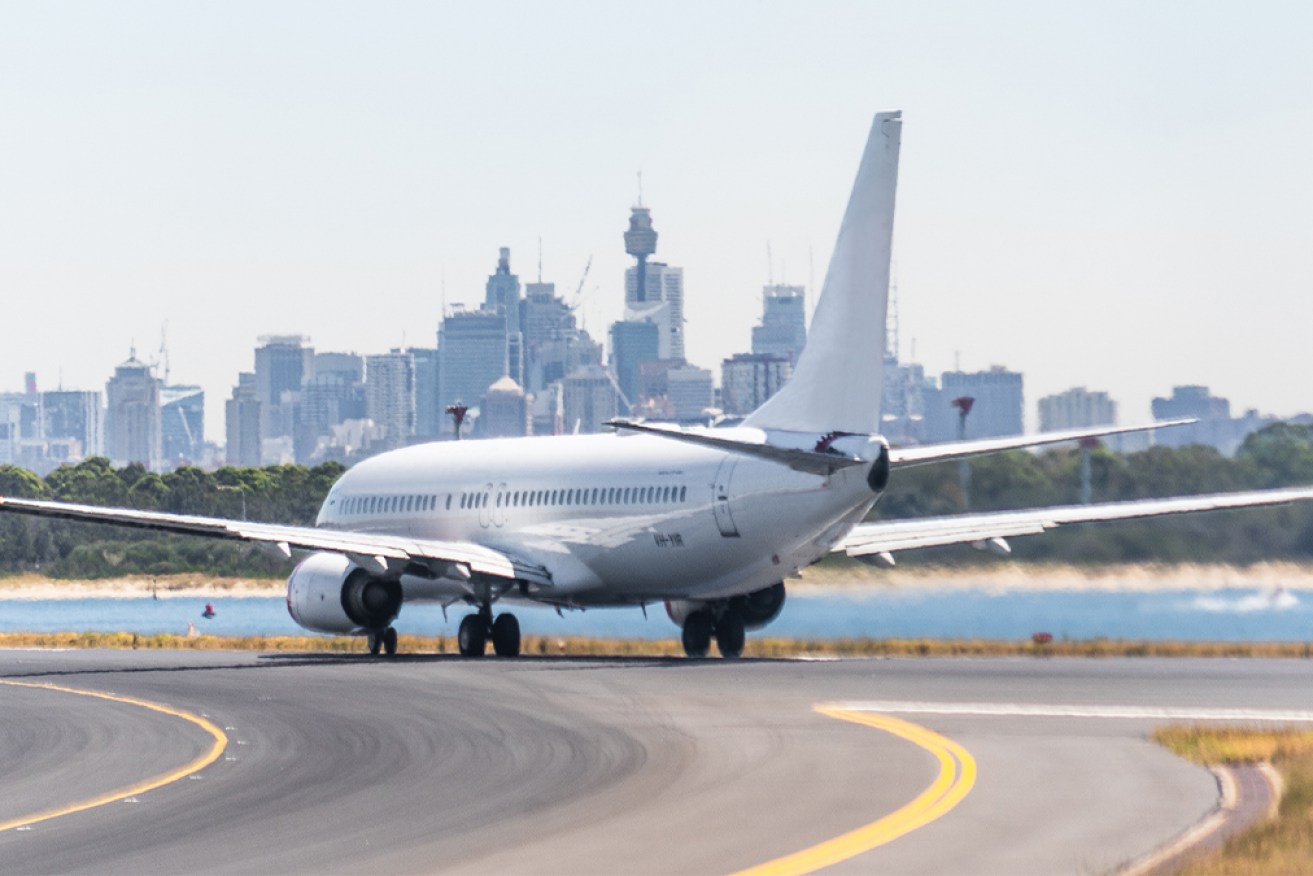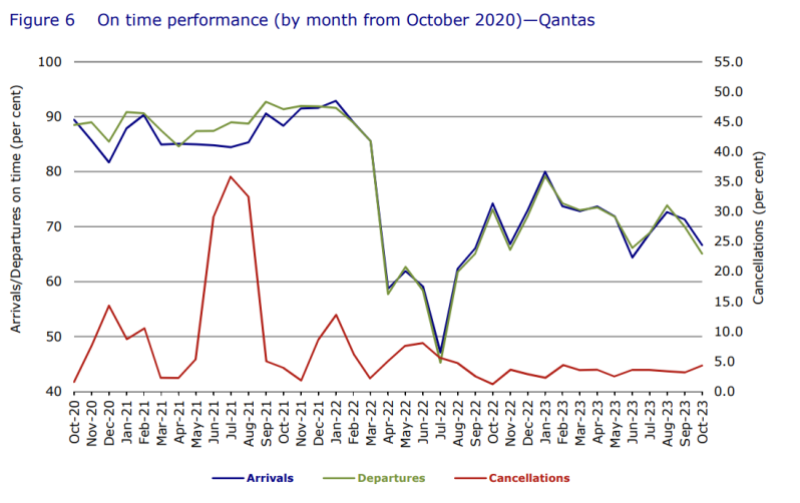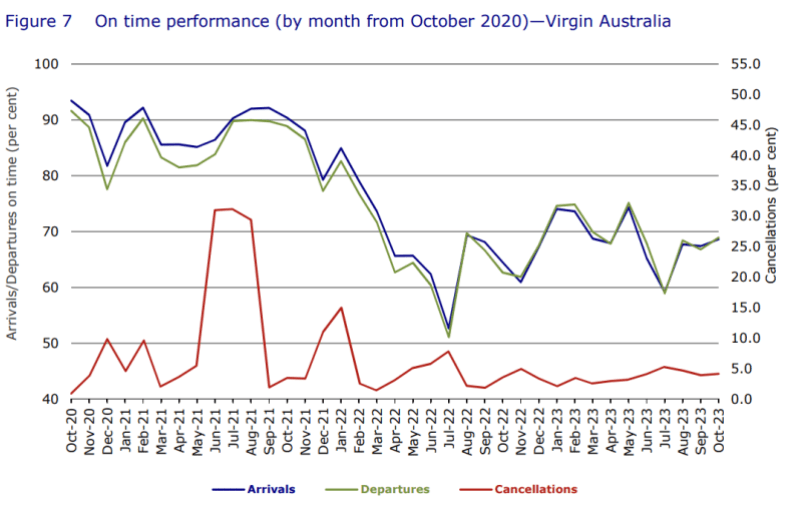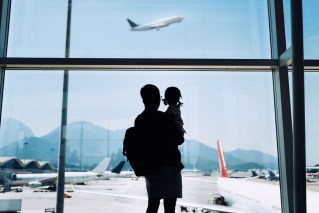Delays and airport hassles: Grim Christmas tidings for Australian flyers


The latest data shows airlines are lagging behind historical service standards heading into Christmas. TND
Australian travellers are being warned to allow more time for their holiday flights and avoid peak periods as airlines struggle to deliver service improvements amid high demand and lingering supply chain issues after COVID.
The latest official statistics tracking the number of delayed and cancelled flights nationwide showed that airlines were still running far behind their historical service standards in October, despite consistent improvements over the past year.
Aviation consultant Neil Hansford said poor weather – particularly in Sydney – played a role in sub-par results in October, adding that high demand for travel and ongoing shortages of workers has shrunk the margin of error for airlines.
He advised travellers to arrive at the airport earlier over the upcoming Christmas period and to avoid travelling on busy days such as Thursday afternoon, Friday, Saturday morning and Monday, when congestion will likely peak.
That may not be possible over the days around Christmas Day (a Sunday this year), but for those travelling over longer periods or throughout January being savvy with when you book a flight can save you time and money.
“Travel on Saturday afternoon and Sunday morning,” Hansford said.
“Not only will you get cheaper prices, you’ll get less congestion.”
‘Hiccups’ plague airlines
The key reason to be worried about Christmas travel this year is that airlines haven’t managed to overcome many of the issues that have plagued them over peak periods since COVID-19, at least not according to the latest data.
Bureau of Infrastructure and Transport Research Economics (BITRE) figures this week showed airlines cancelled 3.8 per cent of flights this past October and delayed just under 30 per cent on either arrival or departure.
The figures continued a familiar story for the industry, with big players like Qantas and Virgin performing better than this time last year, but still much worse than they have historically, the bureau said.
“This month’s on-time arrivals figure was significantly lower than the long term average performance for all routes (81.2 per cent) and the on-time departures figure was also significantly lower than the long-term average (82.3 per cent),” the bureau said.
“The rate of cancellations was higher than the long term average of 2.2 per cent.”
University of Sydney professor Rico Merkert said airlines are still struggling with elevated demand for travel, which means airports are much busier, while also dealing with persistent labour shortages across their supply chains.
“Airlines are busier which leaves them more exposed to disruptions and the staff shortage in almost all areas, but especially pilots, engineers and traffic controllers,” he said.
“[This] leads to hiccups everywhere in the network and is often not within the control of the airline with the delayed or cancelled flight.”
Anger at airlines
Airline performance has improved somewhat compared to last year, when horror scenes of long lines, lost luggage and widespread travel delays sparked widespread consumer anger at large carriers – particularly Qantas.
Anger at the national carrier lingers, particularly after a series of flare ups with investors and politicians in recent months, with even airport operators this week slamming the new Qantas chief over ongoing service problems.
A Qantas spokesperson said severe weather affected flights in October for all but six days of the month.
“We know how important it is for our customers to get away on time and we’re focused on making sure we deliver on the experience our customers expect,” they said.
“Severe weather caused more delays and cancellations in October, with weather impacting flights on all but six days for the month.”
The on-time performance figures actually speak to a wider story about the aviation industry more generally struggling with the return from COVID-19, Hansford said, while high winds and rainy days in Sydney over October haven’t helped the latest figures.
Elevated demand for air travel means that bad weather is more difficult for airlines to navigate, he said, because one set of delays or cancellations can more easily cascade to a wider array of problems for people trying to board flights.
“When you lose the runways [due to weather] it slows down arrivals, which then compounds to slow down departures,” he said.
It means flyers should expect the unexpected this Christmas and try to plan their holiday travel at off-peak times when there’s less demand, because that means if there are issues they’ll be much easier for airlines to resolve.



















